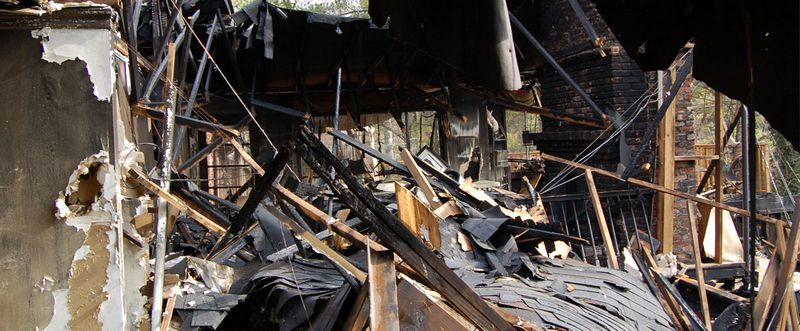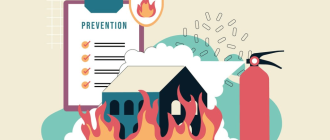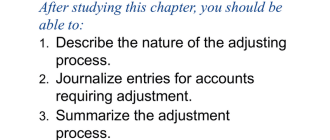
A Closer Look at Property Damage Claims: Insights from an Adjuster.
When it comes to property damage claims, there is often more than meets the eye. As an adjuster, I have had the opportunity to take a closer look at these claims and gain valuable insights into the process. From flooded basements to fire-damaged homes, property damage can be devastating and overwhelming for homeowners. However, by examining each claim with a discerning eye, it is possible to uncover the true extent of the damage and provide homeowners with the help they need.
One of the key insights that I have gained as an adjuster is the importance of a thorough investigation. Damage to a property is not always immediately visible, and it is essential to look beyond the surface to assess the true extent of the loss. This can involve bringing in experts, such as engineers or contractors, to evaluate the structural damage and determine the cost of repairs. By conducting a comprehensive examination, we can accurately assess the value of the claim and ensure that homeowners receive fair compensation.
Another crucial aspect to consider when dealing with property damage claims is the emotional toll it takes on homeowners. Losing one’s home or experiencing significant damage can be a traumatic experience. As adjusters, it is important for us to approach these claims with empathy and understanding, acknowledging the distress that homeowners may be going through. By providing support and guidance throughout the claims process, we can help alleviate some of the stress and provide a sense of reassurance to homeowners.
In conclusion, a closer look at property damage claims not only provides valuable insights for adjusters but also highlights the significance of a comprehensive investigation and empathetic approach. By understanding the true extent of the damage and offering support to homeowners, adjusters can play a vital role in helping them rebuild their lives after a property loss. With attention to detail and a compassionate approach, we can make a difference in the lives of those affected by property damage.
Understanding Property Damage Claims
When it comes to property damage claims, it is crucial to have a closer look at the entire process to gain valuable insights. Property damage claims are often the result of unforeseen events that can cause significant harm to your property. Whether it’s due to natural disasters, accidents, or vandalism, understanding the ins and outs of property damage claims is essential.
Damage to your property can be overwhelming and distressing, but having a clear understanding of how the claims process works can help ease some of the stress. It’s important to document all the damage thoroughly and provide any evidence that can support your claim. This documentation can include photographs, repair estimates, and any other relevant information.
Insurance adjusters play a vital role in the property damage claims process. They will assess the damage, investigate the cause, and determine the coverage available to you. Their expertise and experience in handling property damage claims can provide valuable insights and guidance throughout the process.
When filing a property damage claim, it’s crucial to provide accurate and detailed information. This includes the date and time of the incident, a description of the damage, and any relevant supporting documentation. Being transparent and cooperative with your insurance company can help expedite the claims process and ensure a fair settlement.
It’s also important to be aware of any policy limitations or exclusions that may affect your claim. Understanding the specific coverage provided by your policy can prevent any unexpected surprises during the claims process. Consulting with your insurance agent or adjuster can help clarify any questions or concerns you may have.
Overall, gaining a closer look at property damage claims can provide valuable insights into the process. Understanding what to expect, documenting the damage thoroughly, and working closely with your insurance adjuster can help ensure a smooth claims process and a fair settlement.
The Role of an Adjuster in Property Damage Claims
When it comes to property damage claims, the role of an adjuster is crucial. An adjuster is responsible for assessing the extent of damage and determining the appropriate compensation to be provided to the claimant. Their insights and expertise play a vital role in ensuring a fair and accurate resolution to the claims process.
Often, a closer look at the damage is required to make an accurate assessment. Adjusters inspect the property thoroughly, documenting the damage and collecting evidence. This evidence is then used to determine the value of the claim and the repairs needed.
Adjusters also play a key role in the negotiation process. They work closely with both the claimant and the insurance company to reach a fair settlement. Their knowledge of insurance policies and regulations allows them to navigate the claims process efficiently and effectively.
During the claims process, the adjuster acts as a liaison between the claimant and the insurance company. They communicate updates, gather necessary documentation, and address any questions or concerns that arise. Their goal is to provide a seamless claims process and ensure the claimant is satisfied with the outcome.
The adjuster’s role extends beyond just assessing the damage and negotiating a settlement. They also have expertise in estimating repair costs and coordinating the repair process. This includes working with contractors, scheduling repairs, and overseeing the quality of the work.
| Expertise in insurance policies and regulations | Thorough inspection and documentation | Negotiation with claimant and insurance company | Liaison between claimant and insurance company | Estimating repair costs and coordinating repairs | Overseeing repair process and ensuring quality |
In conclusion, the role of an adjuster in property damage claims is multifaceted. Their insights, expertise, and coordination ensure a fair and accurate resolution to the claims process. Without their involvement, the claims process would be much more challenging and potentially unfair for all parties involved.
Common Types of Property Damage
When taking a closer look at property damage claims, an adjuster gains valuable insights into the various types of damage that can occur to different properties. These insights help the adjuster assess the extent of the damage and determine the appropriate compensation for the claim.
Here are some common types of property damage that an adjuster encounters:
1. Fire Damage: Fires can cause significant damage to properties, destroying structures and belongings. The adjuster examines the extent of the fire damage, including the structural integrity of the property and the value of the items lost.
2. Water Damage: Water damage can result from leaks, floods, or other plumbing issues. This type of damage can lead to structural issues, mold growth, and damage to personal belongings. The adjuster assesses the source of the water damage and determines the necessary repairs and compensation.
3. Wind Damage: Strong winds can cause substantial damage to buildings, roofs, fences, and other structures. The adjuster examines the extent of the wind damage and assesses the repairs needed to restore the property.
4. Hail Damage: Hailstorms can cause dents, cracks, and other forms of damage to roofs, siding, windows, and vehicles. The adjuster determines the extent of the hail damage and evaluates the necessary repairs or replacements.
5. Theft and Vandalism: Property damage claims involving theft or vandalism require careful examination of the damage caused and the value of the stolen or damaged items. The adjuster works to determine the compensation for these losses.
These are just a few examples of the common types of property damage that an adjuster encounters during their work. By understanding these types of damage and their unique characteristics, adjusters can provide accurate assessments and help policyholders through the claims process.
Assessing Property Damage
When it comes to assessing property damage, adjusters gain valuable insights from handling numerous claims. They take a closer look at the damage and evaluate the extent of the loss. Whether the damage is caused by a natural disaster, a fire, or a break-in, the adjuster’s expertise comes into play.
The adjuster carefully examines the affected property, documenting all visible damage. They analyze the structural integrity and determine if any repairs or replacements are necessary. In some cases, they may need to bring in additional experts, such as engineers or contractors, to provide further insights.
Claims related to property damage require a meticulous approach. Adjusters not only assess the visible damage but also consider any hidden damage that may have occurred. This includes damage to the foundation, electrical systems, plumbing, or even mold growth. They take into account all these factors to ensure a fair and accurate assessment.
Damage assessments involve more than just looking at the physical aspects. Adjusters also consider the value of the damaged property, including personal belongings and sentimental items. They take into account any depreciation and assess the costs of repairs or replacements.
Overall, the role of an adjuster in assessing property damage is crucial. Through their expertise and attention to detail, they provide essential insights that help determine the proper compensation for the affected property owner. Their role is not just to look at the damage but also to understand the emotional toll it takes on the property owner, providing empathy and support throughout the claims process.
Factors That Affect Property Damage Claims
When it comes to property damage claims, there are several factors that can have an impact on the outcome. Insurance adjusters take a closer look at these factors to assess the damages and determine the appropriate compensation. Here are some insights into the factors that can affect property damage claims:
- Severity of the Damage: The extent of the damage is one of the key factors that adjusters consider. The more severe the damage, the higher the compensation is likely to be.
- Cause of the Damage: The cause of the damage plays a crucial role in determining the outcome of the claim. Whether the damage is due to natural disasters, accidents, or intentional acts can impact the compensations.
- Proof of Ownership: Providing proof of ownership is essential in property damage claims. Documentation such as receipts, photos, and appraisals can help establish ownership and the value of the damaged property.
- Insurance Coverage: The type and extent of insurance coverage also influence property damage claims. The policy terms, deductibles, and coverage limits can all affect the compensation amount.
- Pre-existing Damage: Adjusters consider whether there was any pre-existing damage to the property before the incident occurred. This can impact the compensation amount, as the claim may only cover the damages caused by the recent incident.
- Timely Reporting: Prompt reporting of the damage is crucial in property damage claims. Insurance companies typically require immediate reporting, and failure to do so can result in denial of the claim or reduced compensation.
- Evidence of Negligence: If negligence or a third party’s fault contributed to the property damage, it can affect the claim. Providing evidence of negligence, such as witness statements or police reports, can help support the claim.
These factors are just some of the many considerations that insurance adjusters take into account when evaluating property damage claims. By understanding these factors, claimants can be better prepared to provide the necessary documentation and evidence to support their claim and maximize their chances of receiving fair compensation.
The Process of Filing a Property Damage Claim
When it comes to dealing with property damage, it is important to understand the process of filing a claim. Obtaining insights from an adjuster can give you a closer look at the steps involved in this process.
1. Gather documentation: The first step in filing a property damage claim is to collect all relevant documentation. This includes photographs, repair estimates, receipts, and any other evidence that supports your claim.
2. Contact your insurance company: Once you have gathered all the necessary documentation, it is time to contact your insurance company. Provide them with the details of the damage and any supporting evidence you have collected.

3. Notify the adjuster: After contacting your insurance company, they will assign an adjuster to your claim. The adjuster will schedule a visit to assess the damage and determine the extent of your coverage.
4. Assess the damage: During the visit, the adjuster will inspect the property and assess the damage. They will evaluate the cost of repairs and determine the amount of compensation you are eligible to receive based on your insurance policy.
5. Review the claim: Once the adjuster has completed their assessment, they will review your claim and compare it with your insurance policy. They will ensure that the damage is covered and that the compensation amount is accurate.
6. Receive compensation: If the adjuster approves your claim, you will receive compensation for the property damage. The amount you receive will depend on the extent of the damage, your coverage, and any applicable deductibles.
7. Make necessary repairs: With the approved compensation, you can proceed to make the necessary repairs to your property. It is important to keep any receipts and documentation of the repairs for future reference.
8. Follow up: After completing the repairs, it is recommended to follow up with your insurance company and notify them that the repairs have been made. This will ensure that your claim is properly closed and any necessary paperwork is completed.
By understanding the process of filing a property damage claim and gaining insights from an adjuster, you can navigate the claims process more effectively and ensure that you receive the compensation you are entitled to.
Working with Insurance Companies in Property Damage Claims
When navigating the complex world of property damage claims, it is important to understand how to work effectively with insurance companies. Insurance companies have processes and procedures in place to handle claims, and by understanding these, policyholders can improve their chances of a successful claim.
Insights from an adjuster can provide a closer look at the specific steps and considerations that come into play when working with insurance companies in property damage claims. These insights can help policyholders prepare and provide the necessary documentation and evidence to support their claims.
One important aspect to keep in mind when working with insurance companies is the need for clear and detailed documentation of the damage. This includes taking photographs, videos, and written descriptions of the extent of the damage. It is also important to keep track of any expenses incurred as a result of the damage, such as temporary accommodations or repairs.
Another key consideration is understanding the policy language and coverage. Insurance policies can be complex and have specific terms and conditions. Policyholders should review their policies and understand the scope of their coverage, including any limitations or exclusions that may affect their claim.
Once the documentation and understanding of the policy are in place, it is important to communicate effectively with the insurance company. This includes promptly reporting the claim, providing all requested information and documentation, and maintaining open and clear communication throughout the process.
Policyholders should also be prepared for the possibility of negotiation. Insurance companies may initially propose a lower settlement offer, and it is important to be prepared to negotiate for a fair resolution. Working with an experienced adjuster can provide valuable insights and guidance during this stage of the process.
In conclusion, working with insurance companies in property damage claims requires careful preparation, documentation, and effective communication. By understanding the insights provided by an adjuster and following these steps, policyholders can navigate the claims process with confidence and increase their chances of a successful outcome.
Negotiating Property Damage Claims
When it comes to property damage claims, negotiation plays a crucial role in ensuring a fair and satisfactory resolution for all parties involved. As an adjuster, it is important to have the insights and knowledge needed to navigate these negotiations effectively.
One of the first steps in negotiating property damage claims is assessing the extent of the damage. This involves thoroughly examining the property, documenting any visible damage, and estimating the cost of repairs or replacement. By having a comprehensive understanding of the damage, you can negotiate from an informed position.
Another key aspect of negotiating property damage claims is understanding the policy coverage. Familiarize yourself with the terms and conditions outlined in the insurance policy to ensure that the claim falls within the covered scope. This knowledge will help you navigate any potential disputes or disagreements with the policyholder.
During the negotiation process, it is essential to maintain open lines of communication with all parties involved. This includes the policyholder, contractors, and any other individuals who may be relevant to the claim. Effective communication allows for the exchange of information, clarification of any concerns or questions, and ultimately builds trust and rapport.
Having a fair and reasonable approach while negotiating property damage claims is crucial. It is important to consider both the interests of the policyholder and the insurance company. Being open to compromise and finding mutually beneficial solutions can lead to quicker and smoother negotiations.
Lastly, it is important to document all negotiations and agreements made throughout the process. This helps ensure transparency and accountability for all parties involved. Detailed documentation serves as a valuable reference in the event of any future disputes or inquiries.
In conclusion, negotiating property damage claims requires the adjuster to have a closer look at the damage, gain insights into policy coverage, maintain open communication, approach negotiations with fairness and reasonableness, and document all agreements. By following these principles, you can navigate property damage claims effectively and work towards a satisfactory resolution.
Legal Considerations in Property Damage Claims
When it comes to property damage claims, there are several legal considerations that both the adjuster and the property owner need to keep in mind. These considerations can greatly impact the outcome of the claims process and determine the amount of compensation that the property owner is entitled to.
Firstly, it is important for the adjuster to carefully review the terms of the property owner’s insurance policy. This will involve analyzing the coverage limits, exclusions, and any applicable deductibles. Understanding the specifics of the insurance policy will allow the adjuster to properly assess the extent of the damage and determine if the claim falls within the policy’s coverage.
Additionally, both the adjuster and the property owner need to be aware of any legal statutes or regulations that may impact the claims process. This could include specific requirements for filing a claim, time limitations for reporting the damages, or any other legal obligations that must be met. Failure to adhere to these legal requirements could result in the denial of the claim.
Furthermore, it is essential for the adjuster to accurately document and assess the damage to the property. This may involve taking photographs, obtaining expert opinions, or conducting site inspections. By documenting the damage thoroughly and providing clear evidence, the adjuster can support the property owner’s claim and ensure that they receive fair compensation for their losses.
Lastly, it is crucial for both parties to be familiar with the legal principles surrounding property damage claims. This includes understanding concepts such as negligence, causation, and valuation. Familiarity with these legal principles will allow the adjuster to accurately determine liability and evaluate the amount of compensation that should be provided to the property owner.
In conclusion, legal considerations play a significant role in property damage claims. Both the adjuster and the property owner must be knowledgeable about the insurance policy terms, legal requirements, and legal principles that apply to their specific situation. By understanding and addressing these legal considerations, the claims process can be navigated effectively, resulting in a fair and satisfactory outcome for all parties involved.
Tips for Maximizing Property Damage Claim Settlements
When it comes to property damage claims, it is important to take a closer look at the process and understand how to navigate it for the best possible outcome. As an adjuster, I have gained valuable insights into what can help property owners maximize their claim settlements. Here are some tips that can make a significant difference:
1. Document the damage thoroughly: Take detailed photographs and videos of the property damage from multiple angles. This documentation will serve as crucial evidence during the claim process.
2. File the claim promptly: Notify your insurance company about the property damage as soon as possible. Promptly filing the claim will ensure that the process begins quickly and gives you a better chance of receiving a fair settlement.
3. Keep records of expenses: Keep track of all expenses related to the property damage, including repairs, temporary lodging, and any other incurred costs. These records will help in determining the value of the claim and negotiating a settlement.
4. Understand your policy: Familiarize yourself with the terms and conditions of your insurance policy. Knowing what is covered and what is not will help you make a stronger case and prevent any misunderstandings during the claim process.
5. Consult with professionals: Seek advice from experienced contractors, estimators, and public adjusters who can provide expert opinions on the extent of the damage and the estimated costs of repair. Their input will strengthen your claim and increase your chances of a higher settlement.
6. Maintain clear communication: Stay in constant communication with your insurance company and keep them informed of any developments or new information regarding the claim. This will show your commitment to resolving the matter and can lead to a faster and smoother settlement process.
7. Negotiate strategically: When it comes to settlement offers, don’t accept the initial offer without considering all factors. Review the offer carefully, consult with professionals, and present your case with confidence to negotiate for a fair and satisfactory settlement.
By following these tips, property owners can significantly improve their chances of maximizing their property damage claim settlements. Remember, thorough documentation, prompt action, and strategic negotiation can make all the difference.
Challenges in Property Damage Claims
When it comes to property damage claims, there are several challenges that both adjusters and policyholders may face. These challenges can make the claims process more complex and time-consuming.
One of the main challenges is assessing the extent of the property damage. Adjusters need to accurately determine the scope of the damage in order to provide a fair and accurate claim settlement. This can be difficult, as damage may be hidden or not immediately apparent.
Another challenge is determining the cause of the damage. Insurance policies typically cover certain causes of property damage, such as fire or water damage, but may exclude others. Adjusters must thoroughly investigate the cause of the damage to determine if it is covered under the policy.
Additionally, there may be challenges related to policy coverage. Some policyholders may not fully understand the terms and conditions of their policy, leading to misunderstandings and disputes. Adjusters must effectively communicate with policyholders to ensure they have a clear understanding of their coverage.
Time constraints can also present a challenge in property damage claims. Adjusters are often under pressure to complete their investigations and settle claims within a certain timeframe. This can be challenging when there is extensive damage or complex circumstances involved.
Overall, property damage claims can be challenging due to the need for accurate assessments, determining coverage, policyholder understanding, and time constraints. By being aware of these challenges, adjusters can navigate the claims process more effectively and provide fair settlements to policyholders.
undefined
What is a property damage claim?
A property damage claim is a request for compensation made by an individual or business whose property has been damaged or destroyed due to an accident, natural disaster, or other covered event.
How does an adjuster determine the value of a property damage claim?
An adjuster will typically visit the damaged property to assess the extent of the damage and gather evidence. They will also consider factors such as the age and condition of the property, the cost of repairs or replacement, and any applicable deductibles or policy limits in order to determine the value of the claim.
What should I do if my property is damaged?
If your property is damaged, it is important to take immediate action to prevent further damage. Notify your insurance company as soon as possible and document the damage by taking photographs or videos. Keep any receipts or invoices for repairs or replacement items, and be sure to cooperate fully with the adjuster assigned to your claim.
What if I disagree with the adjuster’s assessment of my property damage claim?
If you disagree with the adjuster’s assessment of your property damage claim, you have the right to dispute their decision. Contact your insurance company to discuss your concerns and provide any additional evidence or documentation to support your claim. You may also consider hiring a public adjuster or consulting an attorney who specializes in insurance claims.
How long does it typically take to settle a property damage claim?
The length of time it takes to settle a property damage claim can vary depending on the complexity of the claim and the cooperation of all parties involved. In some cases, a claim may be settled within a matter of weeks, while in more complex cases, it may take several months or longer to reach a resolution.
What do property damage claims adjusters do?
Property damage claims adjusters assess and evaluate the extent of damage to properties, such as homes or buildings, and determine the appropriate amount of compensation that should be paid out to the policyholder. They investigate the cause of the damage, review repair estimates, and negotiate settlements with the insurance company.






